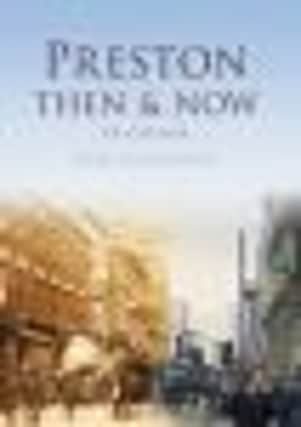Book review: Preston Then & Now by John Garlington


From the area’s early role as a camping ground for travelling Roman legions to its city status award in 2002, Preston has a long and proud history.
But time and progress have transformed the old town centre with many of its older, landmark buildings either demolished or now hedged between shops and chain stores of the concrete, brick and glass variety.
Advertisement
Hide AdAdvertisement
Hide AdJohn Garlington, a Prestonian and author, is helping to celebrate Guild year with the publication of a book featuring a fascinating collection of old and new colour photographs of his home city.
Preston Then & Now reproduces many photographs from the author’s own family collection, all juxtaposed with pictures of the same locations as they look today.
The result is an eye-opening snapshot of over 100 years of development and its impact on streets which were predominantly built for horse-drawn transport and pedestrians but are now dominated by ‘king car.’
The majority of the grand buildings seen on these pages were built after 1840 when wealth accumulated from the Industrial Revolution was used for civic, philanthropic and economic purposes.
Advertisement
Hide AdAdvertisement
Hide AdThe well-heeled residents lived on the fringes of the town in new suburbs like Fulwood and Ashton while lawyers, doctors and professionals moved into the smart townhouses in Avenham and the streets around Winckley Square.
The 1911 census shows that the population of Preston was just below 120,000. The majority of these people were working class and lived in low quality terraced houses mostly grouped around cotton mills and factories.
Garlington’s book takes us on a journey into their world – down the bustling town centre streets, past the magnificent, long-demolished town hall that dominated the corner of Fishergate and Birley Street and alongside the elegant and imposing facade of Miller Arcade as it looked in 1902.
We can enjoy a 1930 view of youngsters playing on the pavement in Black Bull Lane, Fulwood, then the main route to Lancaster, watch pedestrians negotiating a tram on Lancaster Road in 1910 and admire the top hats of the menfolk as they stop to wonder at an early photographing capturing for posterity the Guild Arch in Fishergate in 1862.
Full of nostalgia and revealing photographs, Preston Now & Then is a wonderful addition to local history records and a compelling glimpse of a bygone age.
(The History Press, hardback, £12.99)